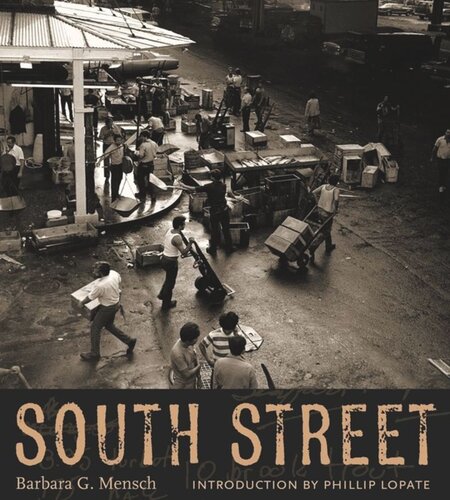

Most ebook files are in PDF format, so you can easily read them using various software such as Foxit Reader or directly on the Google Chrome browser.
Some ebook files are released by publishers in other formats such as .awz, .mobi, .epub, .fb2, etc. You may need to install specific software to read these formats on mobile/PC, such as Calibre.
Please read the tutorial at this link: https://ebookbell.com/faq
We offer FREE conversion to the popular formats you request; however, this may take some time. Therefore, right after payment, please email us, and we will try to provide the service as quickly as possible.
For some exceptional file formats or broken links (if any), please refrain from opening any disputes. Instead, email us first, and we will try to assist within a maximum of 6 hours.
EbookBell Team

4.4
102 reviewsSouth Street is Barbara G. Mensch's evocative tribute to the lost world of Lower Manhattan's Fulton Fish Market. For more than a century, a serious, tightly knit community of fishmongers, many of them recent immigrants and children of immigrants, thrived under the base of the Brooklyn Bridge. Resistant to government regulations and corporate encroachment, these men lived in a closed, internally policed environment that was deeply hostile to outsiders.As a young photographer in the early 1980s, Mensch bonded with this particular group of "authentic New Yorkers," becoming a confidante for their life stories, which were often filled with hardship, mystery, and misadventure. These striking photographs capture the unique personality and fierce secrecy of their vibrant working-class culture. Combined with lively commentary-reminiscent of Studs Terkel's riveting oral histories-these images offer a rare peek inside a society Philip Lopate calls "a precious last vestige of historic Gotham."
South Street is Barbara G. Mensch's evocative tribute to the lost world of Lower Manhattan's Fulton Fish Market. For more than a century, a colorful, tightly knit community of fishmongers, many of them recent immigrants and children of immigrants, thrived under the base of the Brooklyn Bridge. Resistant to government regulations and corporate encroachment, these men lived in a closed, internally policed world that was deeply hostile to outsiders.
As a young photographer in the early 1980s, Mensch bonded with this particular group of "authentic New Yorkers," becoming a confidante for their life stories, which were often filled with hardship, mystery, and misadventures. These striking photographs capture the unique personality and fierce secrecy of their vibrant working-class culture. Combined with lively commentaryreminiscent of Studs Terkel's riveting oral historiesthe images offer a rare peek inside a society described by Philip Lopate as "a precious last vestige of historic Gotham."
Mensch's story ends with the closure of the docks and the opening of the Seaport mall, a symbolic victory of corporate interests over more than a century of mob rule. Her visual essay recounts the driving forces and the effects of this urban transformation on the entrenched community of fishmongers, creating an enduring historical document. Though the Fulton Fish Market no longer resides below the Brooklyn Bridge, the history and energy of this cherished New York City landmark are beautifully preserved in this book.